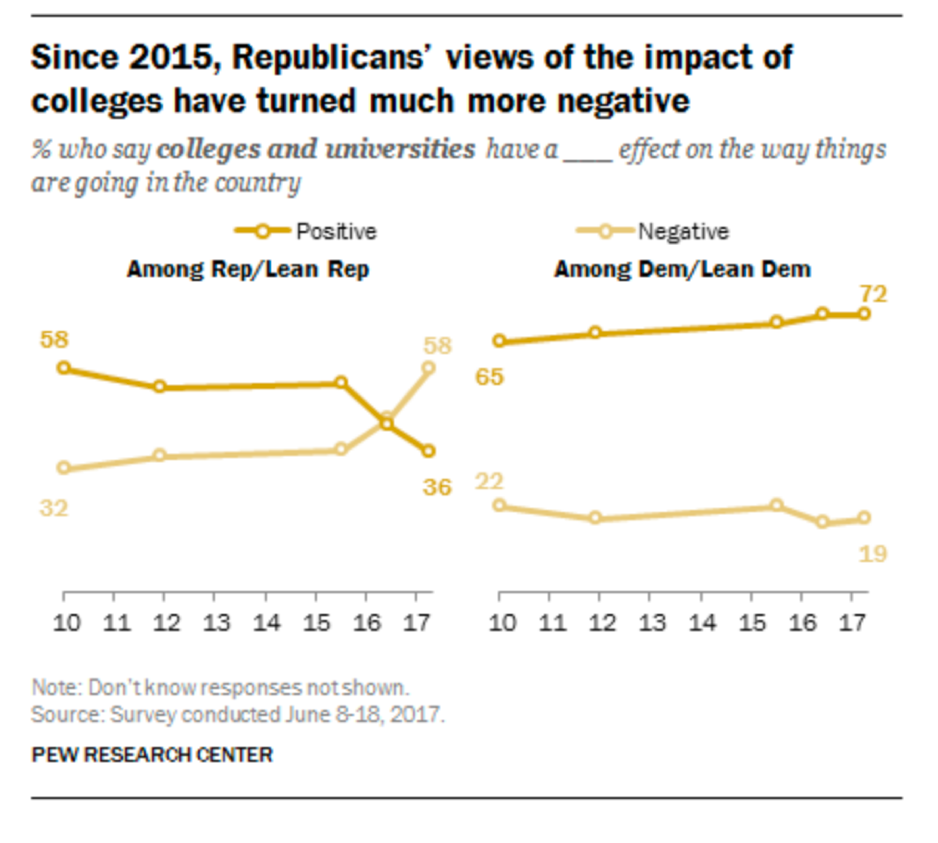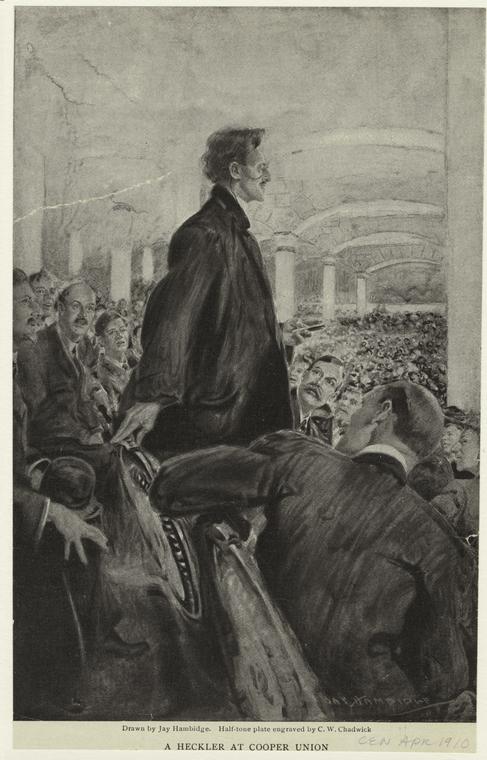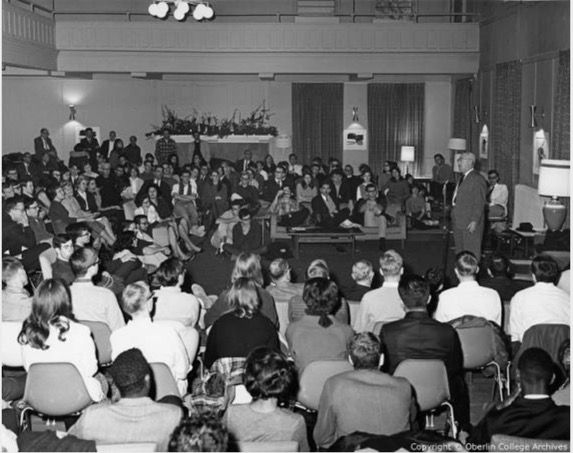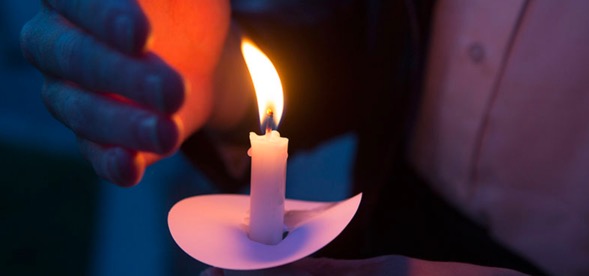Steven Volk, Director, Center for Teaching Innovation and Excellence, Oberlin College – August 21, 2017
Contact: svolk@oberlin.edu
Late August, for those who have been on campus, has been a time of frenetic activity, particularly for those charged with insuring that the buildings and grounds, torn up by myriad summer construction projects, are put back together before the students return. Project managers race around campus on golf carts and bikes, check lists in hand, fretting over what remains to be done in order to reopen buildings, unblock parking lots, and return pedestrians to their regular byways.
Faculty, too, consult our punch lists as the new semester approaches: finish the syllabi, read the books we just assigned our students, get the manuscript out the door. But this year our lists seem longer and more intimidating. Besides constructing classes to teach students calculus and creative writing, French and physics, we must prepare to help them cope with the madness spilling out of Washington, Bedminster, Pyongyang, and Charlottesville, from challenges to Title IX and affirmative action, to threats of nuclear war and the hatred radiating from an increasingly aggressive white nationalist movement. We must prepare to say something coherent about a “justice” system that, in the short time our students were away, saw fit to acquit the police officers charged with killing Terance Crutcher (Tulsa), Philando Castile (Minneapolis), and Sylville K. Smith (Milwaukee). After two hung juries, charges were dropped against the officer charged with the shooting death of Samuel DuBose (Cincinnati).
And we will need to prepare, with patience and passion, for the activism these provocations will surely generate, understanding how to support our students when they target injustice and inequity, and how to critique them when, in the process, they inadvertently undermine what makes us a community.

Pew Research Center
We return to classes in what is surely the most challenging time for higher education in generations. Without even discussing our financial tribulations and the disturbing findings that highly selective colleges and universities are perpetuating, if not increasing, social inequality, we find ourselves plying our trade in a country in which, for the first time, growing numbers question the value of what we are doing. In July the Pew Research Center released the results of a survey which found that the hyper-partisan divide that characterizes almost every policy dispute in Washington now shapes the public’s regard for higher education as well. For the first time on a question asked since 2010, a majority (58%) of Republicans say colleges and universities are having a negative effect on the way things are going in the country; only 36% of Republicans found higher education to have a positive effect. In contrast, 72% of Democrats held a positive view.
Think about it: in a deeply divided country, a significant percentage of the population feels that as a society we would be better off without higher education. And if those views, as I’ll argue in a moment, are shaped by events at a few elite colleges and universities, they inevitably carry over to legislators’ decisions to cut funding to the Cleveland State universities and the Pima County community colleges of the country.
Speech Issues on Campus
There are many reasons for this divide, and many which are worthy of serious consideration (with the almost unimaginable cost of a degree at the top of the list), but only a few are central to the national debate. David Hopkins, co-author of Asymmetric Politics: Ideological Republicans and Group Interest Democrats (Oxford, 2016), recently argued, that the negative view of colleges and universities is an “expectable manifestation” of increased coverage of protests over speakers and issues such as cultural appropriation, safe spaces, and trigger warnings. All are complex issues that tend to be flattened (and most often ridiculed) by the media, and not just at Fox News. Further, these stories are then magnified by higher education’s internet outrage machine led by Campus Reform and The College Fix.
More than other issues, the national conversation about higher education in the past few years has largely focused on student disruptions of campus speakers. To be sure, the issue is a serious one, but, if facts still matter, the actual incidents are few in number. The student-led commotions that shut down Charles Murray at Middlebury and Heather MacDonald at Claremont McKenna are well known, as are the protests that prevented Milo Yiannapolous and Ann Coulter from speaking at Berkeley. Leaving aside the cancellation of speaking engagements where honorifics were involved (commencement speakers, by and large), which raises a different set of issues, I could find only one or two other instances in the last year in which students prevented speakers from delivering invited lectures.

A Heckler at Cooper Union (Jay Hambidge, artist). New York Public Library, Art & Picture Collection, Public Domain
Even if there were more examples of disruptive student behavior, it would still be deeply troubling to learn that legislators in a number of states have used these cases to muscle through measures to discipline students “who interfere with the free-speech rights of other students on their campuses.” Certainly, from the standpoint of academic freedom, this is a case where the “solution” promises to be far worse than the issue it seeks to address.
But the intense focus on Murray or Yiannapolous has raised substantial problems for faculty and others who are deeply concerned with the way in which inquiry and difficult discussions are pursued on our campuses – what has come to be called “campus climate” issues – largely because it has levered the discussion of complex matters into a free speech/First Amendment box. In fact, the conversations we need to be having are much broader and they have to do with the very particular kind of community we aim to establish on our campuses. The conversation we need to be having is about defining, at this moment, the social contract that stipulates how we will behave towards one another, and how that aligns with what we hope to accomplish as institutions of higher educational.
The Goals of Higher Education
While institutions of higher education have many objectives (the production of new knowledge, the perpetuation and enhancement of culture, the socialization of 18-22 year olds, the creation of an informed citizenry, etc.), our central purpose, particularly at liberal arts colleges, is to support student learning. Our mission statements often reference other goals – to “foster…effective, concerned participation in the larger society” (Oberlin), to help students become “engaged members of society” (Pomona), or to engage “with the central issues of our time” (Denison). But these broad mission objectives are always built around what we hope our students will do with the knowledge, skills, and dispositions that they have acquired during the time spent with us. In other words, these critical goals of engagement and a commitment to social justice always presuppose the learning necessary for the formation of effective, aware and informed members of society. In that sense, the primary understanding that underlies all others, the pledge that defines our interaction with others in our community, whether students, faculty, staff, or administrators, is rooted in one central principle: What promotes student learning is to be valued; what hinders it, is to be questioned, challenged, and if needed, rejected. As hazy as this formulation is – for student learning will involve uncomfortable challenges as well as embracing support – such a starting point can add clarity to discussions that are muddled when approached as First Amendment or “free speech” issues.
Student Learning and Campus Speakers
So, how does this approach help anything? Let’s take the issue of invited campus speakers (and here I’m principally referencing private colleges and universities that are outside of specific First Amendment requirements). Speakers whose primary intent is to demean members of our shared educational community and who have made it abundantly clear that what they have to say will not contribute to student learning, should not be invited. As Stanley Fish recently put it, the university’s “normative commitment is to freedom of inquiry,” not to freedom of speech, and those whose vicious bigotry would deny that freedom to members of our community, speakers such as a Milo Yiannapolis or a Richard Spencer or a Jared Taylor, are not welcome. To believe that freedom of speech is at the center of what we do is to displace our obligation to student learning.
For these very same reasons, speakers who can contribute to student learning, even if their approaches make some students intensely uncomfortable, and who locate arguments within the conventions of academic inquiry, even if their outcomes are obnoxious and their methodologies subject to question, must be considered as guests who can further student learning. They should not be denied a platform, as tiresome as it may be to hear repeated arguments that have been refuted many times before. The best response, particularly for students who may not have heard the arguments previously, is to refute them again. The Charles Murrays and Heather MacDonalds of the world fit into this latter category. How these talks are organized, what space is given for Q&A, alternative discussions, preparation, venue, etc., are all important points that must be considered and addressed before the speaker comes.
By suggesting that some speakers must be allowed a platform while others can be denied, I am arguing that cases must be decided on their merits and judged by the standard of whether student learning is to be served. To sidestep that process either by arguing that all speakers must be given a platform or that any controversial speaker should be prohibited avoids what can be learned in such a discussion. I don’t suggest for a moment that these are easy conversations, but they are necessary and presuppose that we have a shared understanding of the social contract that unites us as a community.
Supporting the Learning Environment

Saul Alinsky speaking at the Symposium on Civil Disobedience in a Democratic Society, Oberlin College, December 1965. Oberlin College Archives
A more difficult question arises when addressing the campus climate that supports learning, i.e., dealing with the daily, not the transient. The need here is to prevent the consolidation of an environment that permits orthodoxy – any orthodoxy – from becoming hegemonic. I have heard too many stories from students who say that they don’t speak up in class because they fear repercussion from some of their peers, and from faculty who worry that a few students seem intent on setting intentional trip wires for them to fall over, to imagine that this is not an issue. Indeed, if we fail as educational institutions intended to challenge students to think in complex ways about difficult issues, allowing this climate to continue unchallenged will be one road to failure.
Some perspective is needed here. I understand, but have little patience for, those who recall with nostalgia a “golden age of inquiry” when they were students, when “everyone was challenged to think critically,” when discussion wasn’t stifled by campus orthodoxy. Jonathan Haidt, the NYU social psychologist who, with Greg Lukianoff, gave us the “Coddling of the American Mind,” recently observed that, “When I went to Yale, in 1981, it said above the main gate ‘Lux et Veritas,’ Light and Truth. We are here to find truth.” While some aspect of Haidt’s (and others’) concern might be reasonable, no less true is the fact that Yale’s commitment to “Lux et Veritas” was based on a thoroughly Eurocentric canon that limited what students were given access to as either “Light” or “Truth.” (And I won’t even mention – OK, so I will – that African Americans only made up 6% of Yale’s student body in 1984, when Haidt graduated, and that the university only admitted women 11 years before he arrived on campus.)** In short, we can’t address what is a real concern – creating a climate that supports learning by challenging all orthodoxies – by posing a mythic golden age to which we should return.
Further, I do not hesitate to ally myself with the many students (and faculty and staff and administrators) who feel a desperate urgency to confront racist, misogynistic, or homophobic views, particularly as they have been given a platform in the White House. While some of those views certainly exist in the academy, and while it is incumbent upon whites in particular to examine the basis of our privilege, the problem posed for our institutions is not that such issues are raised, but that the methods sometimes used to raise them can undercut our identity as educational institutions based on inquiry and discussion.
Our central approach to such challenges remains in supporting student learning as best we can, in ways that are culturally relevant and sustaining and that foster equity as well as inquiry. And we know that this is not accomplished through intimidation, explicit or implicit, by calling out those who are asking for conversation and clarification, and it’s certainly not done by labeling or shaming. Just as our students must be encouraged to critique, criticize and challenge, so, in turn, they need to be open to critique, criticism, and challenge. Faculty must be responsible for creating an environment in their classrooms where difficult questions can be raised and discussed, and where students who feel more insecure in these conversations are made to feel that they can raise questions, express opinions, and challenge arguments without fear of shaming in class or social reprisal (in person or via social media) outside of class.
Faculty should be encouraged to help students see themselves as teachers as well as learners. If they have disagreements or think viewpoints are racist, discriminatory, or ill-informed, they should be encouraged to act as they would hope their teachers would act, persuading through arguments backed by evidence and experience, by drawing others into the discussion, not by intimidation or silencing.
The First Day of Classes
There are many ways to begin to address these challenges, but I’d put just one on our late summer check list. On the first day of classes, rather than discussing the syllabus, assignments, or how many absences they are allowed, think of starting in a different way, regardless of what you teach. We all know that, as a country, we are going through a difficult time marked by sharp divisions. Perhaps it’s unprecedented – but as a historian I’d only say that it is surely unprecedented in the lives of our students. At this time, as we come together as a community, we need to ask ourselves: What is this education for? How does or should the college support the learning and well-being of all students? How do we envision, and then implement, an environment in which such learning can take place? What makes us a community? What do we need and expect from each other? And, finally, what is the nature of the social contract that binds us together and what does that mean in terms of how we treat each other?
The answers can help us build campuses that protect our students, move us toward greater equity, and promote the learning that is at the foundation of our existence.
_____________________
** Just to be clear, my critique here is of Haidt’s nostalgia, not of the many students at Yale at the time who saw the invitation to find in “Lux et Veritas” a way to “change the system,” as one grad put it to me. I apologize for any misunderstandings. [Added Aug. 22, 2017, 12:41 PM]


